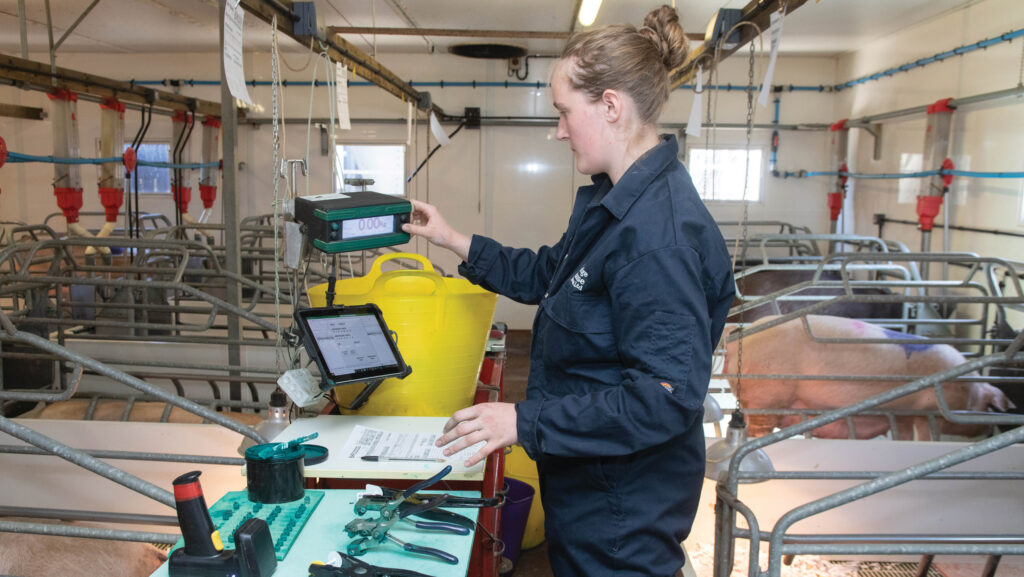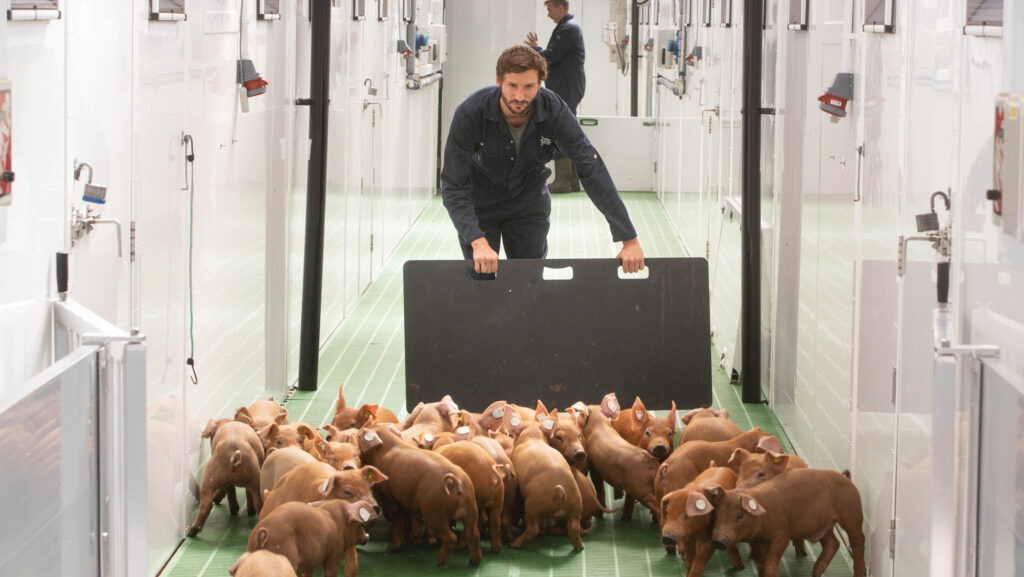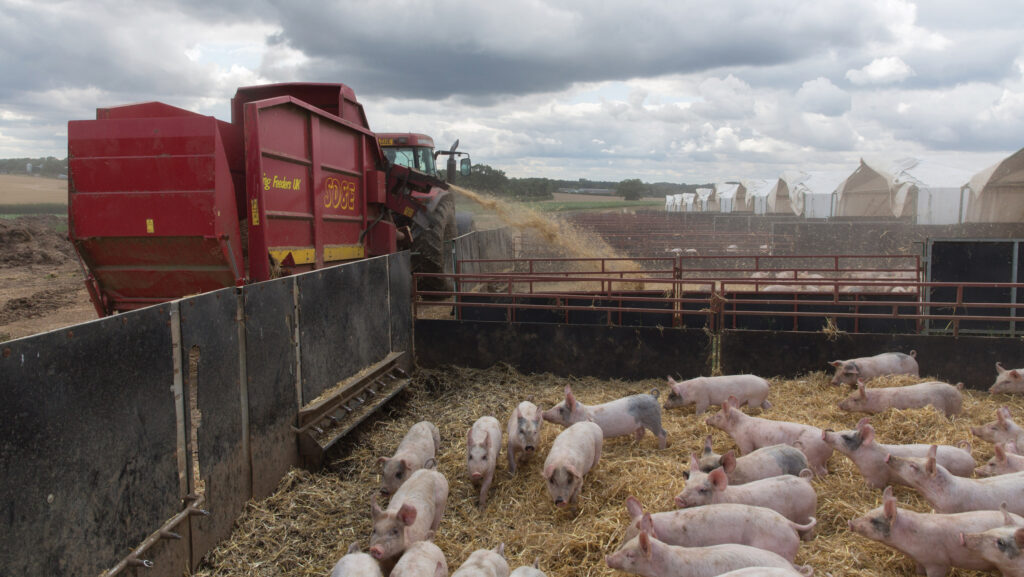6 ways to find – and keep – staff on pig farms
 © Tim Scrivener
© Tim Scrivener Pig producers struggling to find and retain good-quality staff are advised to focus on getting the basics right and consistently meeting key needs.
“Pay must be fair and should always meet or exceed the national minimum or national living wage,” advises people management expert Paul Harris of Real Success. “However, there are much bigger motivators for people than money.
See also: How changes in pig unit staffing raised weaning weights
“The non-negotiables are learning how to communicate effectively with your team, along with ensuring sensible working hours, decent working conditions and safety,” he adds.
“Training, social events, reviews, bonuses, benefits, branding and entering awards can all be added once the essentials are in place.”
A 2022 survey by the Institute for Agriculture and Horticulture (Tiah) revealed that 67% of pork businesses had had a difficult-to-fill role.
Published in its report Labour and skills in the horticulture and agriculture sectors in England, the survey also found that labour shortages on pig farms meant 66% of employers reported working more, 44% were asking staff to work more, and 33% said production levels were decreasing as a result.
Challenges
The pig industry continues to grapple with these challenges in 2025, says Tiah’s head of partnerships and policy, Tess Howe.
The reasons it can be difficult to attract new people include: the perception of pig farming as physically demanding and unpleasant; misconceptions about animal welfare; early starts; weekend work; and poor people management.
The labour market has also changed. “The reduction in the availability of migrant labour post-Brexit has left many producers with fewer applicants for manual and technical roles,” says Paul.
Below, Tess and Paul share practical advice to help pig producers find the right people and maintain a stable team in a changing labour market.
1. Build communication skills
“At exit interviews, 98% of employees say their reasons for leaving are to do with the way they were spoken to or the way their manager worked,” says Paul. “People don’t leave jobs, they leave managers.”
Managers need training in fundamental people skills: listening, giving feedback, planning rotas fairly and resolving conflict early.
Communication is the most important skill, and saying thank you – simply being appreciative of a job well done – is a good starting point.
Setting manageable targets, using a whiteboard to communicate key information, and holding short, daily or weekly check-in meetings helps keep the team informed and involved.
Tone, language and communication style all have an impact and may need to be adjusted for different people. This starts from the very first phone call and the interview with job applicants.
“Producers also need to be honest about the work,” Tess advises. “It can be physically demanding and also difficult emotionally, if animals are ill and the workload is heavier, for example.”
Equally, it is important to show the job in a real and positive light and promote it with pride, which can be done using photos, staff stories or videos.

© Tim Scrivener
2. Consider working patterns and hours
Working on a pig farm offers consistent, rewarding work and regular income, provided that rotas and shift patterns are managed correctly, with regular weekends off and legal rest breaks.
“The next generation of workers doesn’t want to work 100 hours a week,” Paul points out. “If we can get closer to a 40-hour working week on our farm, we’ll stand out.”
Offering a mix of full- and part-time roles can work well, along with adapting shift patterns to enable employees to fit work around their home life.
If people are given adequate time off and are feeling well-resourced and appreciated, it will reflect in their work and help make the business appeal to future job applicants.
3. Ensure good, safe working conditions
Pig producers should consider the quality of staff facilities, such as a warm, dry place to eat and take breaks, provision of overalls and boots, and washing facilities.
“Small things can set you apart. If you don’t have showers, you can still provide somewhere clean and dry for people to change into their own clothes, washbasins with hot and cold running water, and clean, private toilets suitable for female employees.”
Ensuring a safe place to work is also vital. Issues should be promptly fixed, whether it be broken gates, slippery floors or poor lighting.

© Tim Scrivener
4. Invest in training and career development
Investment in training and career development, with clear pathways for progression, helps people feel motivated and work to their best potential.
“The pig industry offers really good opportunities for career progression, compared with other farming sectors,” says Tess. “People can be managing large pig herds or businesses within a relatively short time.”
On-farm training starts with explaining why, not just what, tasks need to be done. Some may need formal technical training on husbandry, health and welfare, while others might need people management training.
“Make training personal,” says Paul. “Have regular one-to-one reviews and ask about what individuals are interested in.”
Producers also need to be comfortable with good people leaving for new opportunities. Others are more likely to apply to replace them if the farm has a good reputation as an employer.
“You might worry that if you train them, they might then leave. But what about if you don’t train them, and they stay?”
5. Broaden the search for new employees
Look as widely as possible for potential employees, and try to build links and talent pipelines. As well as people with a farming or rural background or education, pig farms have successfully employed people from military and hospitality backgrounds, for example.
There may be others who would like part-time work, such as parents or those supplementing other incomes. “Consider apprenticeships or offering ‘return to work’ roles for older workers or career changers,” says Paul.
Partnerships with local colleges, schools or training schemes are also worth considering, with pig businesses offering placements or work shadowing.
6. Prioritise reputation and pig welfare
Both national and local reputation need to be built to help with recruitment. “Social media is critical to grow reputation beyond the farm gate and is pig farmers’ collective responsibility,” says Paul.
Locally, word of mouth is very powerful when recruiting, via people who have already had a positive experience working on a farm.
Pig welfare should always be prioritised, not only for the animals, but also business performance and reputation. The key to animal welfare is effective people management.
“How people treat animals is directly influenced by how farm leaders manage and support their teams,” says Paul. “Attitude, motivation and behaviour are affected by a range of factors from tiredness to people’s working environment.
“Ensure everyone is trained on welfare standards and build pride in your farm’s high quality of care. A farm that puts pigs first will often retain people who care too.”

